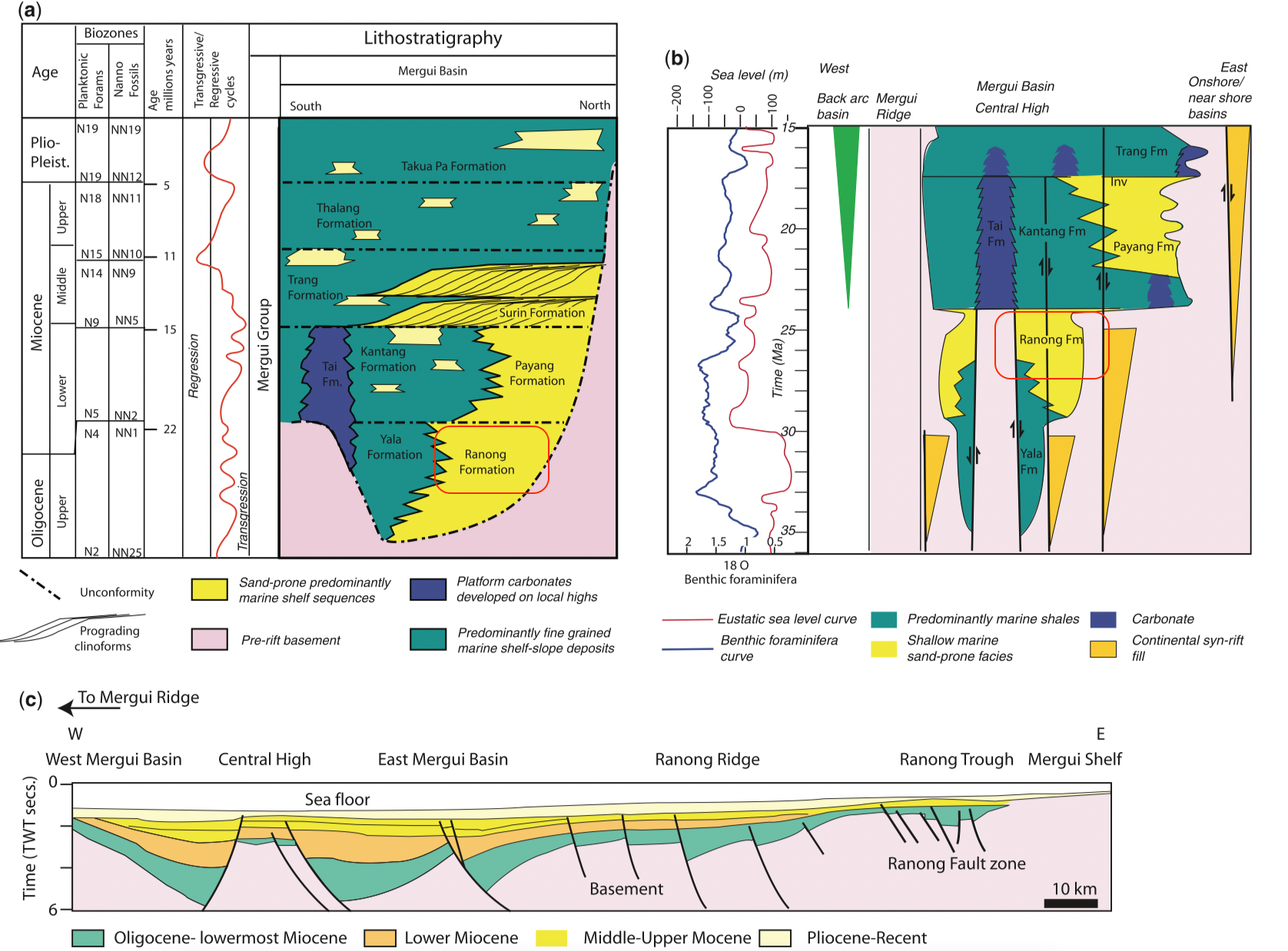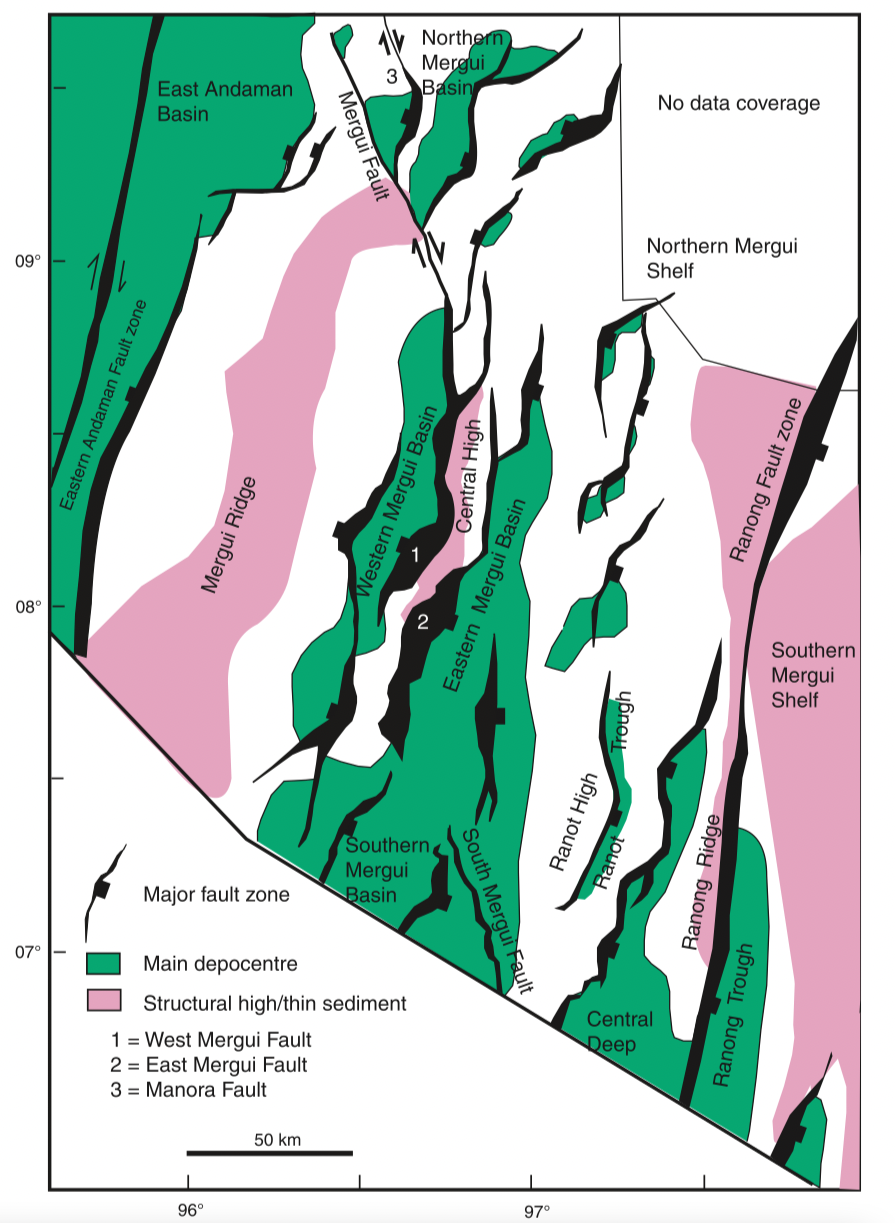Type Locality and Naming
Named after Ranong fault which cuts obliquely across the Thai-Malay Peninsula. Type section at B-1 well from the interval 8,030-11,710 feet. Polachan (1988) revised the “Ranong formation” of Nakanart and Mantajit (1983) into 2 formations:
Ranong Fm consists mainly of sandstone, and
Yala Fm comprises mostly of shale with minor sandstone. Parent unit:
Mergui Gr.
Synonym: หมวดหินระนอง
[Figure 1: Map of the Mergui Basin showing the main structural features including basin depocentres, based on an extensive grid of 2D seismic reflection data. (From C K Morley & A Racey, 2011)]
Lithology and Thickness
Massive or thick bedded, variable color sandstones and conglomerate in the lower part of the formation; grey sandstone, siltstone and shale with occasional thin coals in the middle part; and predominantly fine-grained, calcareous greenish grey massive/ thick bedded sandstones in the upper part. Thickness: 1,104 m at type locality to 230 m at the Payang well.
[Figure 2: Stratigraphy and cross-section through the Mergui Basin, Andaman Sea, based on data in Polachan & Racey (1994) and Andreason et al. (1997). (a) Oligocene–Recent stratigraphy of the Mergui Basin; (b) stratigraphy of the syn-rift section (Oligocene–early Miocene) schematically illustrating the east–west variation in stratigraphy across the basin and the effect of rift-basin highs (e.g. Central High horst block) on large-scale distribution of sedimentary facies, modified from Andreason et al. (1997); (c) east–west cross-section through the Mergui Basin illustrating the typical half-graben geometries of the basin (modified from Polachan & Racey 1994). (From C K Morley & A Racey, 2011)]

GeoJSON
{"type":"Feature","geometry":{"type":"MultiPolygon","coordinates":[[[[96.42,9.64],[96.37,9.79],[96.39,9.91],[96.5,10.01],[96.69,10.1],[96.92,10.14],[97.23,9.93],[97.31,9.81],[97.31,9.64],[97.27,9.47],[97.26,9.34],[97.21,9.16],[97.13,8.98],[96.96,8.94],[96.85,8.9],[96.76,8.89],[96.66,9.08],[96.56,9.32],[96.42,9.64]]]]}}
Compiler:
Wen Du - modified from- C. K. Morley & A. Racey, 2011, Chapter 10 Tertiary in Ridd, M.F., Barber, A.J., and Grow, M.J., editors,
The Geology of Thailand, Geol. Soc. of London.;
Lexicon of Stratigraphic Names of Thailand of 2013.

